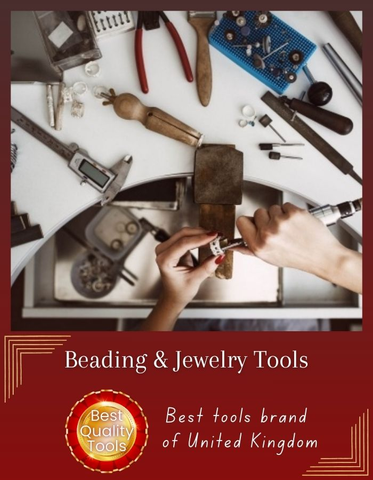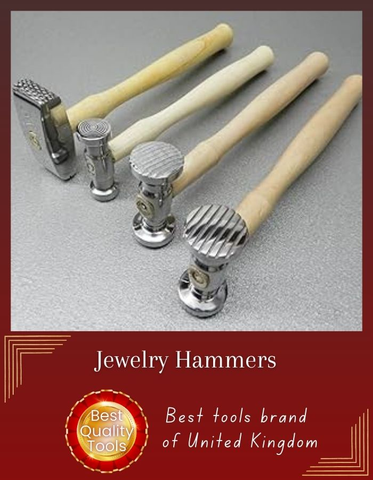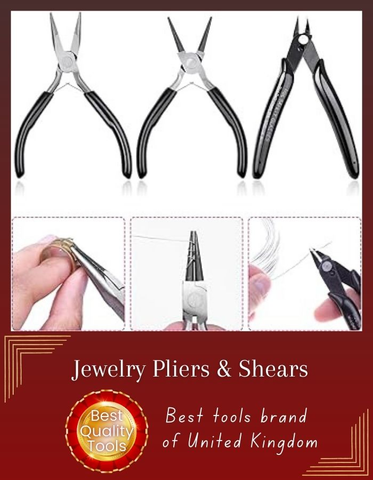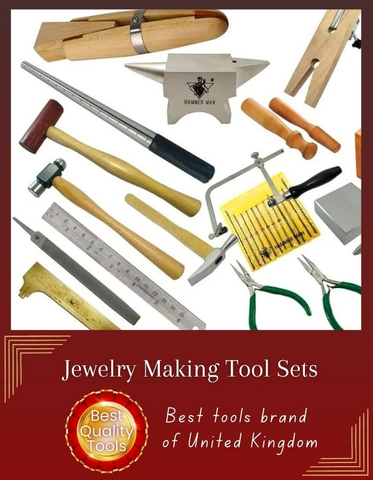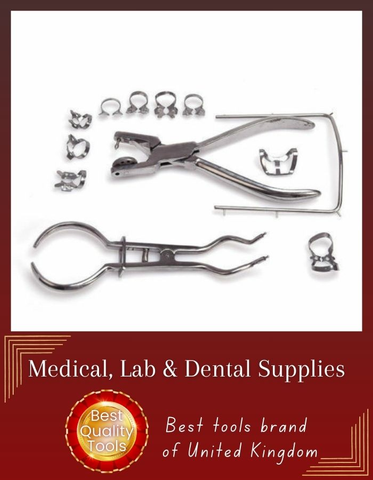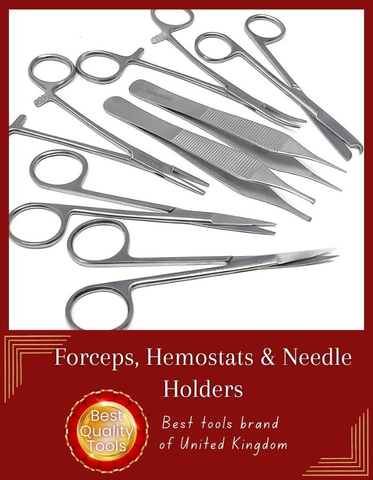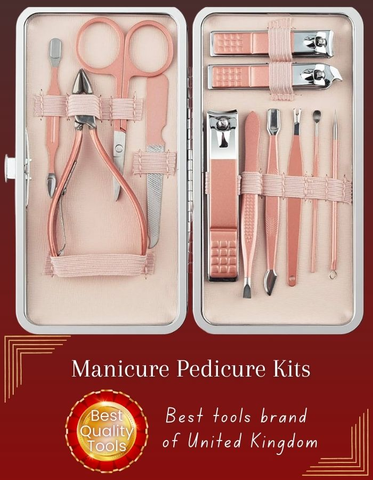Frequently Asked Questions About Jewellery Making Tools
1. What are the Essential Tools for a Beginner in Jewellery Making?
Answer: For beginners, a basic toolkit typically includes:
- Round-nose pliers: For creating loops and curves.
- Chain-nose pliers: For gripping and bending wire.
- Flat-nose pliers: For holding and straightening wire.
- Wire cutters: For cutting wire and chain.
- Bead reamer: For enlarging bead holes.
- Tweezers: For handling small components.
- Jeweller’s hammer: For flattening and texturing metal.
- Ruler or caliper: For measuring accurately.
2. How do I choose the right size and type of pliers for my projects?
Answer: The choice depends on the project and your hand size. For detailed work, smaller pliers with thin jaws are ideal. For heavier tasks, like manipulating thicker wire, opt for larger, more robust pliers. Comfort is key, so ensure the handles are ergonomically designed and fit well in your hands.
3. What is the difference between a bead reamer and a bead drill?
Answer: A bead reamer is used to smooth out and enlarge existing bead holes, usually manually. It’s perfect for fine-tuning. A bead drill is a powered tool used to create or enlarge holes in beads, often used for larger quantities or tougher materials. It offers more precision and speed but requires careful handling.
4. How should I maintain and clean my jewellery-making tools?
Answer: Regular maintenance prolongs the life of your tools:
- Clean: Wipe tools with a soft cloth after each use to remove debris and moisture. Use a gentle, non-abrasive cleaner if needed.
- Lubricate: Apply a small amount of oil (like sewing machine oil) to moving parts to prevent rust and ensure smooth operation.
- Store: Keep tools in a dry, organized place. Use protective cases or tool rolls to prevent damage.
- Inspect: Regularly check for signs of wear or damage, such as dull blades or loose joints, and address issues promptly.
5. How do I prevent my pliers from marring or scratching my jewellery pieces?
Answer: To avoid damage:
- Use appropriate jaws: Opt for pliers with smooth, coated jaws for delicate work.
- Apply tape or rubber: Wrap the jaws with masking tape or use rubber-coated pliers to protect the surface of your jewellery.
- Work carefully: Apply gentle pressure and avoid using pliers for tasks beyond their intended purpose.
6. What should I consider when buying specialized tools for metalworking?
Answer: When purchasing metalworking tools, consider:
- Material quality: Look for tools made from high-grade steel or other durable materials for longevity.
- Functionality: Ensure the tool meets the specific needs of your project, whether it's for soldering, stamping, or forming metal.
- Ergonomics: Choose tools with comfortable grips and balanced weight to reduce fatigue during extended use.
7. How can I safely use a jeweller’s torch?
Answer: Safety is crucial with a jeweller’s torch:
- Work in a well-ventilated area: To avoid inhaling fumes.
- Use safety gear: Wear protective eyewear and gloves.
- Keep flammable materials away: Ensure your workspace is clear of any flammable substances.
- Follow instructions: Read and adhere to the manufacturer’s guidelines for proper use and handling.
8. How do I sharpen my jewellery-making tools, such as wire cutters or files?
Answer: Sharpening tools should be done with care:
- Wire cutters: Use a specialized sharpening tool or service designed for cutting edges. Regularly inspect the cutters and replace them if sharpening does not restore effectiveness.
- Files: Clean files with a wire brush to remove debris. For precision, use a sharpening stone or file appropriate for the material of the file.
9. What are the best practices for organizing jewellery-making tools?
Answer: Effective organization boosts productivity:
- Use a tool rack or pegboard: To keep frequently used tools visible and easily accessible.
- Employ storage drawers: For smaller items like beads, findings, and hand tools.
- Label storage containers: To quickly find specific tools or supplies.
- Keep a clean workspace: Regularly declutter to maintain an efficient and safe working environment.
10. How do I choose between manual and electric tools for jewellery making?
Answer: Consider the following:
- Manual tools: Offer greater control and precision for detailed work. They are also often more affordable and require no electricity.
- Electric tools: Save time and effort, especially for repetitive or bulk tasks. They are ideal for high-volume production but may involve a higher initial investment and require careful handling.
11. How can I tell if my tools are of good quality?
Answer: Quality tools typically have:
- Durable materials: Made from high-grade steel or other robust materials.
- Solid construction: Sturdy joints, smooth operation, and comfortable grips.
- Reputable brands: Established brands often offer higher quality and better warranties.
- Positive reviews: Customer feedback and professional reviews can provide insights into the tool’s performance and reliability.


